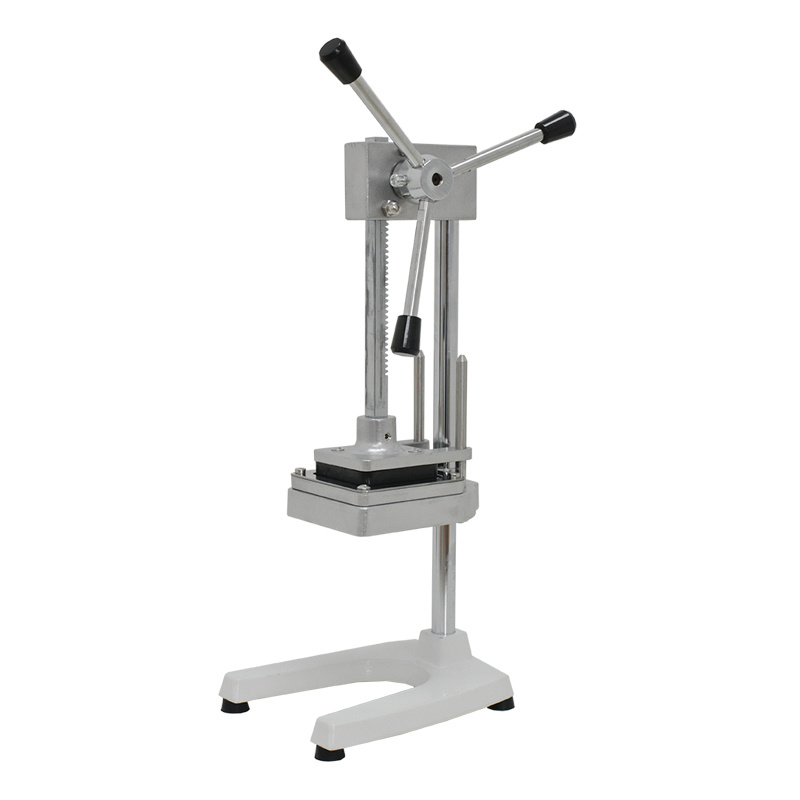Details
I. Industry Status and Challenges
1. Market Trends
● Consumption Upgrade: Consumers' increasing demands for higher quality, healthier, and more personalized snacks are driving the development of machinery towards intelligence, refinement, and multi-functionality.
● Policy Drivers: Stricter food safety regulations require machinery to meet hygiene standards and have strong traceability; environmental policies promote energy-efficient and low-emission equipment.
● Intensified Competition: Small and medium-sized enterprises face cost pressures, while leading companies seize high-end markets through technological barriers. Demand is significantly increasing in niche segments (such as healthy snacks and frozen snacks).
2. Core Challenges
● Technological Bottlenecks: Traditional equipment has low automation levels and high energy consumption, making it difficult to meet the demands of complex processes such as low-temperature baking and vacuum frying.
● Food Safety: Issues such as equipment materials, cleaning difficulty, and cross-contamination risks need to be optimized.
● Customized Needs: Different types of snacks (such as puffed foods, baked goods, and frozen dough products) have significant process differences, requiring flexible equipment adaptation.
II. Solutions: Full-Chain Optimization
(I) Product Innovation and Technological Upgrades
1. Intelligence and Automation
● Intelligent Control System:
● Equipped with PLC (Programmable Logic Controller) or Industrial Internet of Things (IIoT) modules to achieve real-time monitoring of process parameters, fault warnings, and remote maintenance. For example, frying equipment can automatically adjust oil temperature and volume, reducing manual intervention and improving yield.
● Integrated AI vision detection technology for online screening of product size, color, and defects, reducing manual inspection costs.
● Flexible Production Equipment:
● Design modular structure, allowing for quick switching of product types (such as from producing potato chips to shrimp chips) by changing molds and adjusting parameters, meeting the needs of small batches and multiple varieties.
● Case Study: A company launched a "multi-functional snack production line" compatible with three processes: puffing, baking, and frying, adapting to 30+ snack categories.
2. Healthy and Environmentally Friendly Technology
● Low-Oil, Low-Fat Processes:
● Promotion of air frying technology, vacuum frying, and low-temperature baking equipment to reduce oil usage (e.g., air fryers save more than 70% oil compared to traditional frying), aligning with the trend of healthy snacks.
● Development of microwave puffing equipment, using thermal energy instead of traditional frying to reduce oil intake while maintaining texture.
● Environmentally Friendly Design:
● Using energy-efficient motors and waste heat recovery systems (such as reuse of filtered waste oil from frying equipment) to reduce energy consumption; equipment casings use recyclable materials (such as food-grade stainless steel and environmentally friendly plastics).
● Optimizing the exhaust gas treatment system and adding oil fume purification devices to meet environmental emission requirements.
3. Enhanced Food Safety
● Material Upgrades:
● Parts in contact with food use 304 stainless steel, food-grade silicone and other corrosion-resistant, easy-to-clean materials to prevent heavy metal migration or plastic microplastic contamination.
● Case Study: A company replaced traditional aluminum alloy molds with stainless steel, obtaining FDA certification and entering the European and American markets.
● Cleaning and Sterilization:
● Design CIP (Clean-in-Place) system, supporting automatic cleaning and disinfection (such as high-temperature steam sterilization and ultraviolet sterilization), reducing manual cleaning blind spots and lowering the risk of microbial contamination.
(II) Production and Supply Chain Optimization
1. Lean Production Management
● Modular Assembly: Disassembling equipment into standardized modules (such as power systems, transmission systems, and control systems), prefabricating components, and shortening on-site installation time (e.g., from 30 days to 15 days).
● Digital Factory: Introducing MES (Manufacturing Execution System) to monitor production progress, equipment status, and energy consumption data in real time, optimizing production scheduling, and reducing inventory costs.
2. Supply Chain Collaboration
● Independent Research and Development of Core Components: Independently researching and developing key components (such as high-precision motors and intelligent sensors) or jointly developing them with specialized manufacturers to avoid dependence on external suppliers.
● Localized Procurement: Establishing regional supply chain centers in target markets (such as Southeast Asia and Africa) to reduce logistics costs and quickly respond to customer needs.
(III) Market and Business Model Innovation
1. Precise Market Positioning
● Focus on Niche Segments:
● Healthy Snack Equipment: Developing specialized equipment for low-sugar, low-fat, and high-protein snacks (such as vegetable chips and plant-based meat snacks) to meet the needs of emerging brands.
● Regionally Characteristic Snacks: Design machinery adapted for local snacks (e.g., Indian paratha machines, Middle Eastern hummus production lines) to explore overseas local markets.
●Tiered customer service:
●Provide to SMEs economical equipment (e.g., single-function fryers), paired with leasing or installment payment models; for large enterprises, launch customized production lines , offering value-added services such as process consulting and recipe developmentరికి
2. Marketing and Channel Expansion
●Scenario-based marketing:
●Showcase equipment production processes through short videos and live streams (e.g., “10 minutes from raw material to finished product”), emphasizing efficiency and quality; organize offline tasting events, inviting customers to experience snacks produced by the equipment on-siteరికి
●Case: A certain enterprise released a series of “Snack Factory Exploration” videos on Bilibili, garnering over a million views and driving a 40% increase in equipment inquiriesరికి
●Cross-border e-commerce strategy:
●Expand overseas customers through platforms such as Alibaba International Station and Amazon Business, providing multi-language operation manuals and remote installation guidanceరికి
(D) Service and Customer Value Enhancement
1. Full Lifecycle Service System
●Pre-sales: Provide free process design solutions (e.g., customizing equipment combinations based on customer target products), demonstrating production processes through 3D simulationsరికి
●In-sales: Dispatch engineers for on-site equipment debugging and operator training (e.g., setting up “operation certification assessments” to ensure proficient customer use)రికి
●After-sales:
●Establish a 48-hour response mechanism, resolving over 80% of common faults through remote diagnosis; offering “spare parts pre-replacement” service for critical components to reduce downtime lossesరికి
●Launch equipment extended warranty + annual inspection package, regularly maintaining equipment to extend its service lifeరికి
2. Data-driven Value-added Services
● Development of Equipment management APP, customers can view real-time equipment operation data (e.g., output, energy consumption, fault rate) and receive reminders for consumable replacement and suggestions for process optimization (e.g., “current oil temperature can be lowered by 5℃ to save energy”)రికి
●Establish Industry data sharing platform, aggregating production data from different customers (anonymized) to provide market trend analysis (e.g., “Demand for spicy and sour snack equipment increased by 25% in 2024”)రికి
III. Case Studies
Case 1: Transformation of a Puffed Food Machinery Enterprise
●Pain point: Traditional equipment has high energy consumption, labor costs account for 30%, and it is difficult to meet EU environmental standardsరికి
●Solution:
●Introduced servo motors + frequency conversion control systems, reducing energy consumption by 25%; added AI vision detection, decreasing defective rate from 5% to 1.5%రికి
●Developed a “low-oil puffed production line” for the European market, obtained CE certification, successfully entered the supply chains of German and French snack enterprises, increasing sales price by 30%రికి
Case 2: Customized Equipment for a Snack Chain Brand
●Demand: A certain chain brand needs to unify snack production standards across its 300 stores nationwide, requiring equipment to be compact, easy to operate, and ensure consistent outputరికి
●Solution:
● Design Compact smart fryer , with built-in preset programs (e.g., “chicken nugget mode”, “french fry mode”), one-touch start automatically controls time and temperature, ensuring consistent tasteరికి
●Equipment supports IoT connection, allowing headquarters to monitor equipment usage frequency and oil consumption in each store in real-time, optimizing supply chain managementరికి
IV. Future Trends and Suggestions
1. Technology Integration: Focus on AI+5G + robotics technology , developing fully automated unmanned production lines (e.g., unmanned operations from raw material feeding to packaging)రికి
2. Sustainable Development: Explore lightweight equipment design (reducing material consumption), solar power supply, and other green technologies, responding to the “dual carbon” goalsరికి
3. Cross-industry Collaboration: Collaborate with food R&D institutions and seasoning enterprises to jointly develop “equipment + recipe” integrated solutions, enhancing customer stickinessరికి
key word:

Follow Yuanfang Food Machinery
WhatsApp:+8613790070071
Email:max.huang@fsyuanfang.cn
ADD :No. 4-2, Changjiao Industrial Park 8th Road, Xingtan Town, Shunde District, Foshan City, Guangdong Province

Service hotline: 18923208400
WhatsAPP: 8613790070071
ADD:No.14, Hexi Road, Xingtan Town, Shunde District, Foshan City
Email: 2338821494@qq.com
We will give you feedback in time

 +8618923208400
+8618923208400

